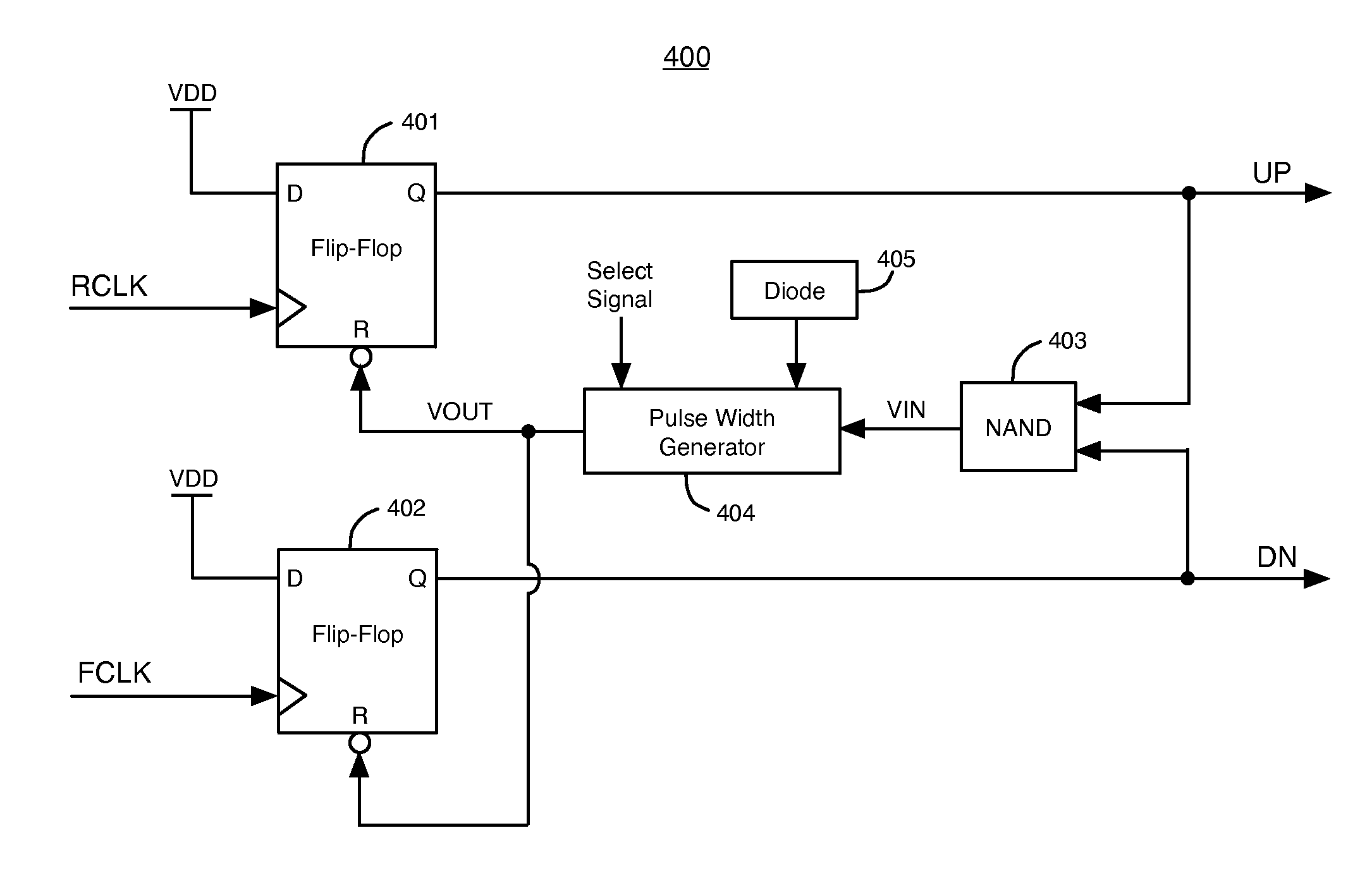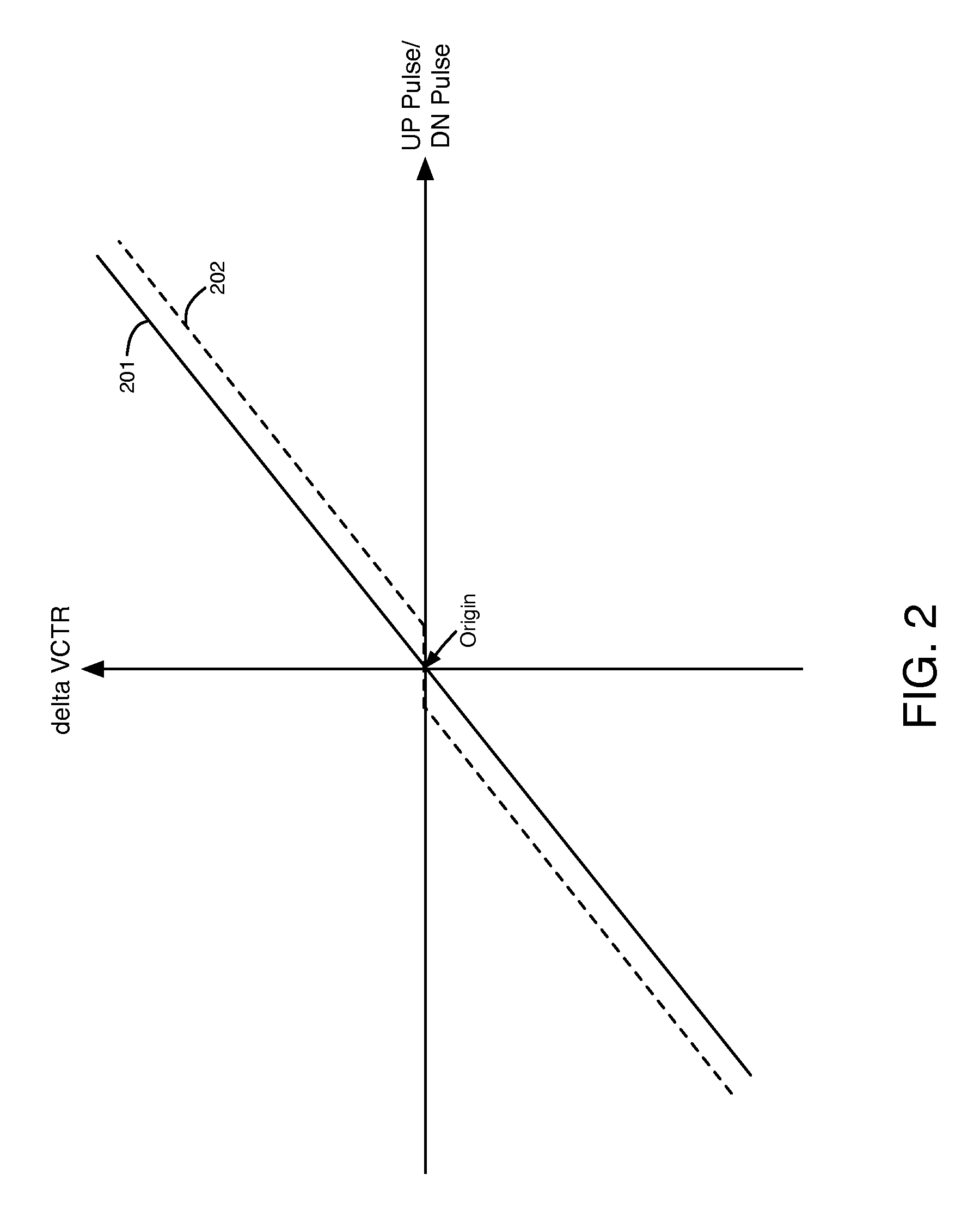Phase Frequency Detectors Generating Minimum Pulse Widths
- Summary
- Abstract
- Description
- Claims
- Application Information
AI Technical Summary
Benefits of technology
Problems solved by technology
Method used
Image
Examples
Embodiment Construction
[0021]FIG. 1 illustrates an example of a phase-locked loop (PLL) 100 that can include embodiments of the present invention. PLL 100 includes phase frequency detector (PFD) 101, charge pump (CP) 102, loop filter (LF) 103, voltage-controlled oscillator (VCO) 104, feedback divider 105, and lock detect circuit (LD) 106. VCO 104 generates a VCO output clock signal. Feedback divider 105 includes a counter circuit that divides the frequency of the VCO output clock signal to generate a feedback clock signal (FCLK).
[0022]PFD 101 compares the phase and frequency of the reference clock signal (RCLK) to the phase and frequency of the feedback clock signal (FCLK). PFD 101 varies the width of pulses in its UP and DN output signals in response to differences in the phase and frequency of RCLK and FCLK, until the phase and frequency of FCLK and RCLK are the same. Typically, a pulse refers to a period of time when a digital signal is in a logic high state. However, according to alternative embodimen...
PUM
 Login to View More
Login to View More Abstract
Description
Claims
Application Information
 Login to View More
Login to View More - R&D
- Intellectual Property
- Life Sciences
- Materials
- Tech Scout
- Unparalleled Data Quality
- Higher Quality Content
- 60% Fewer Hallucinations
Browse by: Latest US Patents, China's latest patents, Technical Efficacy Thesaurus, Application Domain, Technology Topic, Popular Technical Reports.
© 2025 PatSnap. All rights reserved.Legal|Privacy policy|Modern Slavery Act Transparency Statement|Sitemap|About US| Contact US: help@patsnap.com



